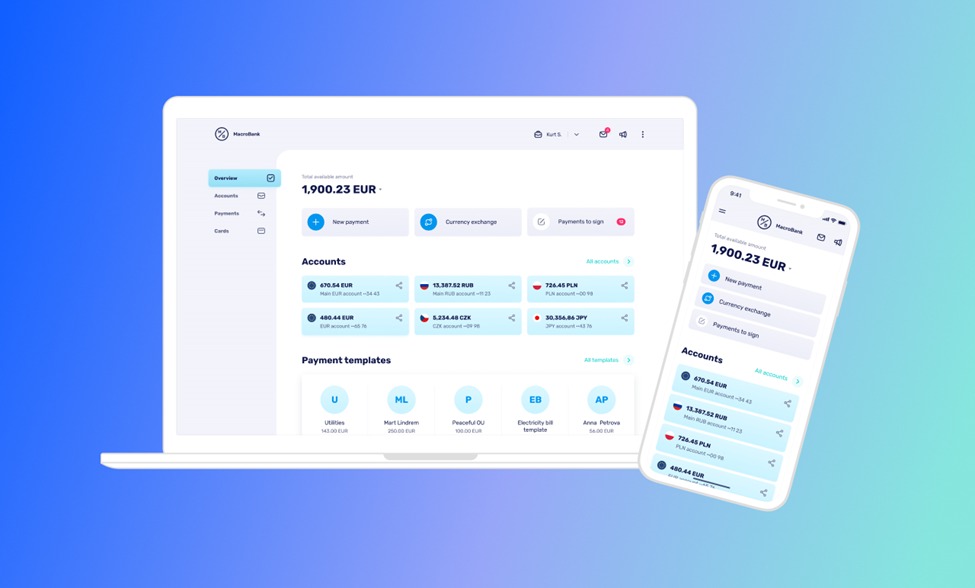Business
Essential Back-Office Capabilities in Core Banking Software: Key Requirements and Features

At the heart of financial operations, the Core Banking system serves as the engine driving daily banking and e-wallet transactions, overseeing customer accounts, and maintaining robust financial accounting. This article provides an in-depth exploration of each module within Advapay’s Core Banking platform, highlighting their functional capabilities specifically tailored to bolster the primary functions of digital banks, e-wallets, and payment institutions.
Macrobank, Advapay’s back-office solution, stands out with an expansive array of functionalities meticulously designed to meet intricate regulatory, business, and customer demands. These capabilities are not only geared towards ensuring compliance with regulatory standards but also towards optimizing operational efficiency, minimizing costs, and delivering an unparalleled customer experience.
Essential Criteria for the Back-Office of the Core Banking System
Ensuring Regulatory Compliance:
In the dynamic realm of digital banking and payment institutions, navigating regulatory intricacies is a constant challenge. The adaptable architecture of the Core Banking system rises to this occasion, guaranteeing compliance with European regulations such as the PSD2 directive, Open Banking, and local financial regulator legislation. This encompasses the seamless submission of mandated reports to regulatory authorities, ensuring a robust and compliant operational framework.
Streamlining Processes through Automation:
The Core Banking system is designed to elevate productivity, enhance customer service, and optimize operational performance by automating key processes. This includes the creation of diverse customer groups and the implementation of rules governing Anti-Money Laundering (AML), payments, and other customer-related processes. The system’s automation capabilities are customizable, allowing businesses to tailor processes to their specific operational needs.
Fostering a Customer-Centric Approach:
In the banking and fintech sectors, prioritizing exceptional customer experiences is non-negotiable. The Core Banking system’s flexibility and capabilities play a pivotal role in crafting these experiences. Whether streamlining onboarding procedures or automating payments, the system ensures a customer-centric approach that effectively addresses their unique financial challenges, reinforcing a positive and seamless interaction with the institution.
Back-Office Mastery: Unveiling the Full Spectrum of Core Banking System Capabilities
Explore the intricacies of our Core Banking system solution’s extensive capabilities, where each module is meticulously crafted to bolster the fundamental operations of digital banks, e-wallets, and payment institutions.
Current Accounts & IBANs:
Automate the creation of current accounts and generate diverse IBANs—be it multicurrency, single-currency, or sets of currencies. Customers have the flexibility to apply for individual or business accounts in over 30 currencies. The module ensures operational flexibility through full or partial automation and customizable rules.
Financial Accounting & General Ledger:
Maintain real-time, multi-currency accounting that complies with International Financial Reporting Standards (IFRS). This module encompasses a General Ledger and a customizable Chart of Accounts, empowering businesses with detailed reports for regulatory compliance and strategic long-term planning.
Payments and Transfer Processing:
Initiate various international, local, or internal payments and transfers seamlessly. The module integrates with correspondent accounts and currency exchange platforms, providing flexibility in payment options. Automated tariff and commission settings elevate the efficiency of payment processes.
Currencies and Rates:
Facilitate automated currency conversion through API and integrations with liquidity providers. This module allows businesses to choose preferred currency exchange providers, offering flexibility in setting rates and tariffs based on different parameters.
Client Onboarding and Management:
Streamline customer applications, profile creation, access granting, and document management. This module supports both individual and business profiles with customizable onboarding workflows, ensuring a customer-friendly experience.
AML/KYC:
Enable remote identity verification, AML/KYC document checks, and transaction screening. The module supports manual or automated verification through integrations with KYC/AML providers, featuring customizable transaction filters and limits.
Tariffs and Fees:
Establish diverse tariff categories and apply specific fees based on parameters such as payment types, countries, and customer types. The module accommodates various payment strategies, offering unlimited options for fee creation in percentage, fixed values, or a combination of both.
Conclusion
The Back-Office Core Banking system serves as the linchpin for comprehensive and efficient financial operations in the realm of digital banks, e-wallets, and payment institutions. Through its diverse modules and capabilities, it addresses critical facets of modern banking, providing automated current account creation, robust financial accounting, seamless payments processing, and streamlined client onboarding. The system’s commitment to regulatory requirements and modular flexibility not only ensures compliance but also allows for tailored solutions aligned with the unique needs of businesses. Additionally, the integration of AML/KYC measures fortifies security, while the dynamic tariff and fee module caters to diverse business models. As a centralized hub for managing transactions, accounts, and customer interactions, the Back-Office Core Banking system emerges as a powerful tool, offering scalability, automation, and a robust foundation for the evolving landscape of financial services.






















